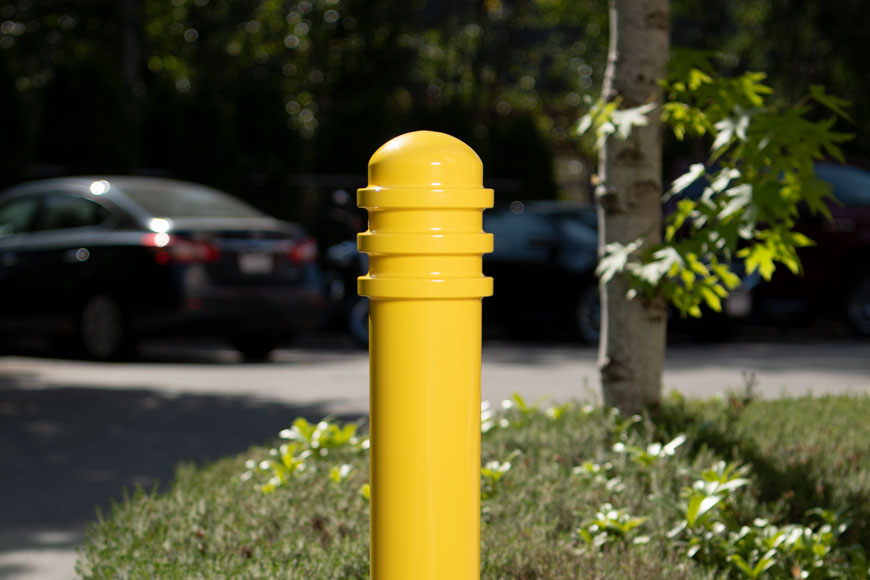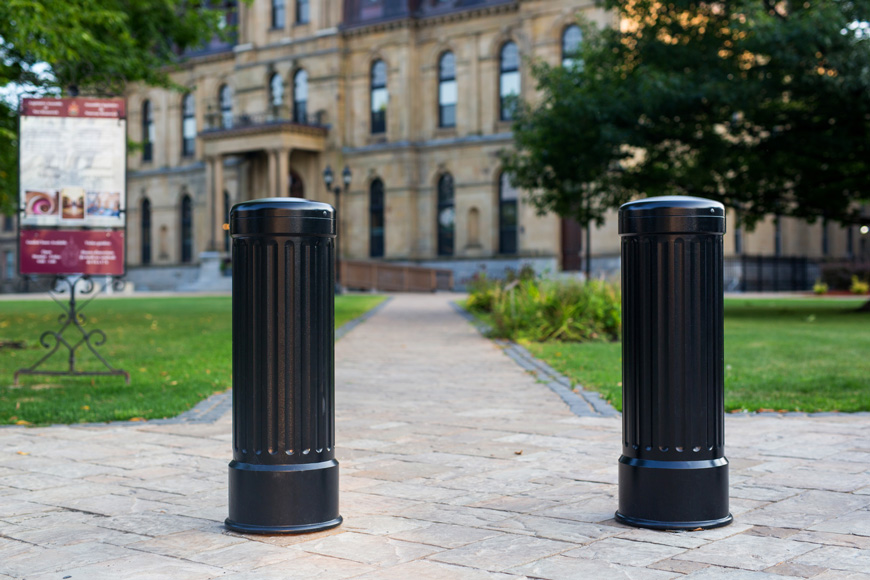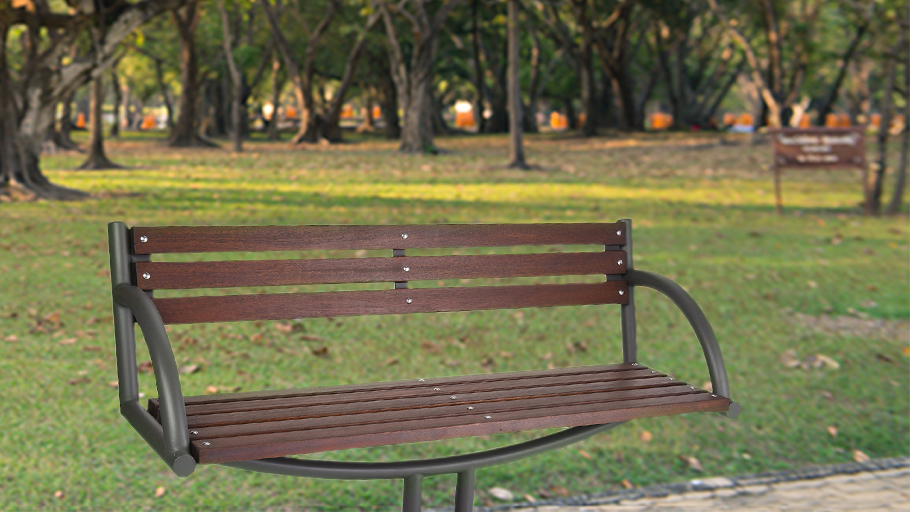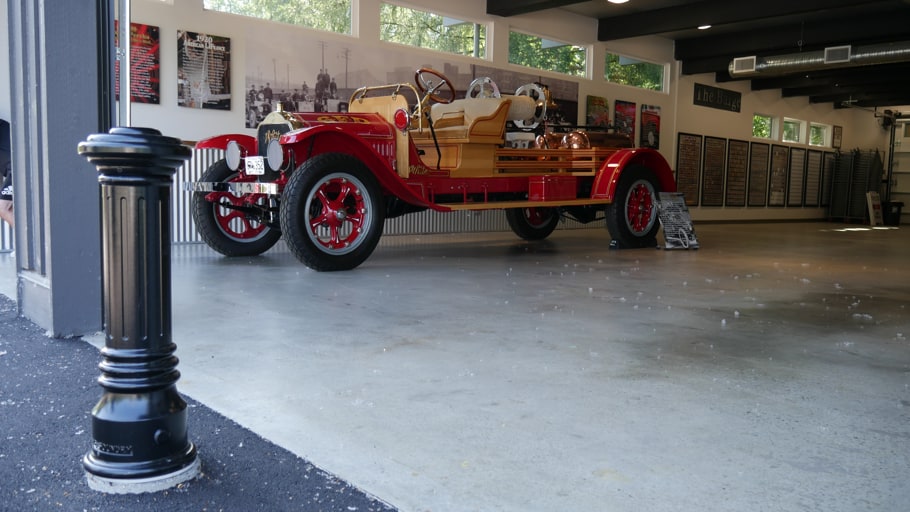Important principles of parking design in health care
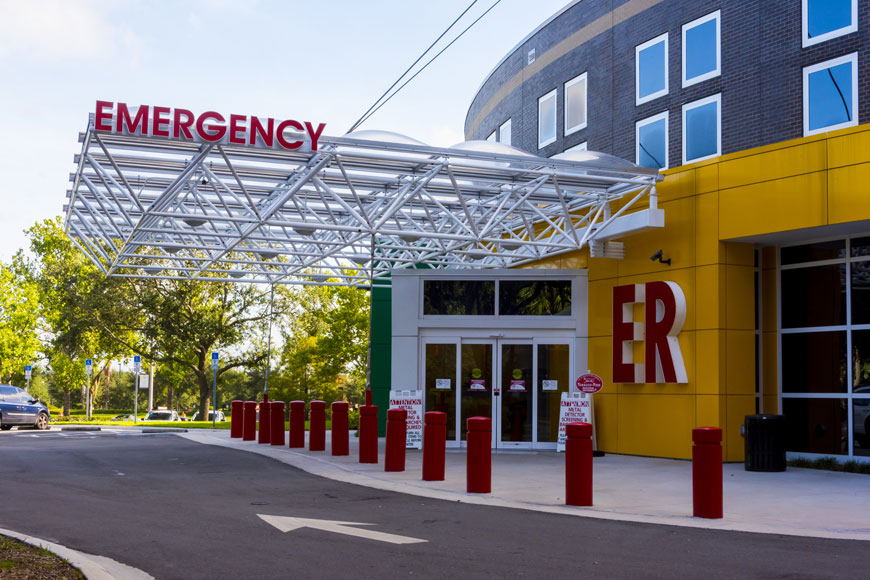
How much parking should be required for new construction? This question is at the forefront in urban planning. City councils are moving toward ride-share programs, public transit, cycling, walking, and local amenities as a way of reducing overall traffic and carbon footprint. To reflect these changing priorities, many municipal codes are reducing the number of parking spots, aiming instead for walkable neighborhoods and street-level engagement. Yet parking reduction strategies are not always appropriate. Hospitals remain one area where parking is necessary. Elderly and sick patients with compromised mobility need accessible spots close to entrances. Nearby parking also is supportive of families and visitors, who are often under time pressure and emotional stress. Consultants, students, and researchers, who often visit the hospital intermittently as part of other work, often have car-dependent routines that require quick movement around the city. Good design and hospital parking management is important to care for a community’s wellbeing.
Supportive hospital parking design
Many of the design needs of a hospital are like the design needs of any parking lot. Yet the heightened needs of a vulnerable population mean small details have extra significance.
Multi-modal access
Many groups of people visit a hospital: supply trucks and services, staff, medical professionals, other emergency professionals, consultants, visitors, and patients. Patients include those using outpatient services, those with chronic conditions managed in the hospital, and those seeking emergency care. Each group has a different transportation profile and different parking needs.
Loading bays for supply delivery are necessary at any sufficiently large institution: food, medical supplies, and large assets all must be safely loaded into the facility. Threading large trucks through the same areas served by emergency vehicles will endanger lives. Often loading bays and emergency vehicles are placed at opposite sides of the building, in turn-about areas allowing for quick turnover.
Also requiring short-term delivery are those patients dropped off by friends, families, taxis, or car services. These groups will need empty stretches of curb near an entrance. Usually these short-term spaces will be used only for drop off and pick up, but there are a few requirements to consider. They should not impede or compete with ambulance access to the ER. Since some who are coming by car may be in distress, roadway drop off should be separated from pedestrian spaces, either by location or with security bollards. For less urgent drop-off, it’s useful to have a transit stop near a non-emergency entrance—for visitors, staff, and those using outpatient services.
Longer-term parking is generally placed at a slightly greater distance. These parking stalls accommodate those working at the hospital, outpatients, short-term patients, and the public. These groups are also well served by bike parking. Hospital employees may choose to cycle to and from work, requiring ample lockers or cages suitable for leaving a bike eight hours or more. Visitors may also cycle but have different needs: easy-to-access short term outdoor bike racks in busy areas.
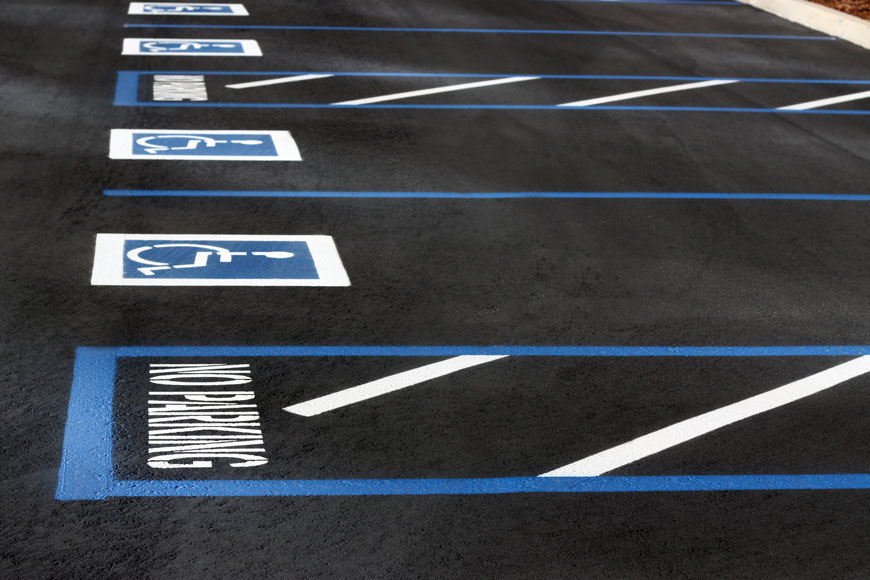
Accessibility for those with handicaps
The parking facilities at a hospital should be designed with disability in mind.
The American Department of Justice’s Americans with Disabilities Act (ADA) requires that 10% of all parking spots at hospitals be accessible, which is greater than the requirements for other facilities. Increased van-accessibility is also a requirement. These spaces feature side-easement to allow the safe unloading of a wheelchair.
Elevators and ramps are necessary at each elevated access point, so that those who cannot negotiate stairs have another path. Slope is an important consideration both in ramp design and in the lot itself. “Cross-slope”, or any slope that an individual might have to negotiate sideways, is best kept to under 2% grade. The surface of the lot itself should be kept to this measure, as wheelchairs might be moving any direction over it. Ramps are by design more constrained. The maximum slope of a ramp feasible for wheelchair accessibility is 8.33%, but 7.14% grade is better for ambulatory patients with mobility issues. Ramps of lower slope than that are preferred by both groups.
Slip resistance is important along the grade. The ADA specifies handrails along both sides of the ramp and edge protection where there is a drop off. Landings where ramps change direction—and other places where wheelchairs need to turn and maneuver—should be at least 60 inches square.
All bollards, trash cans, pay stations, or other items should have clear path to access or pass them, at least 36 inches apart, but preferentially 47 inches. Doors and gates should have automatic or touch openings, or require minimal force to open, no more than 5-1/2 pounds. Thresholds at the doors should either be minimal or beveled.
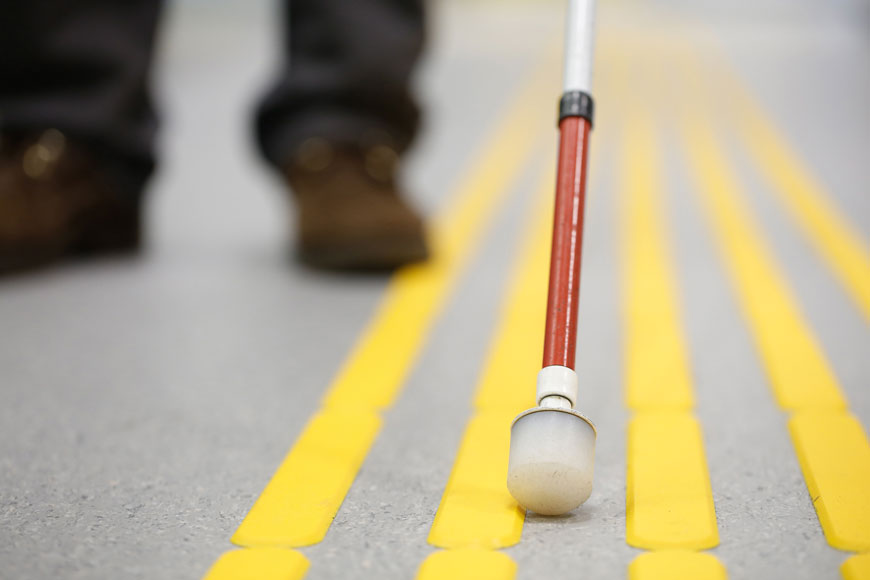
Accessible parking design is not just for those with mobility issues. Visually-impaired people might also be coming through the parking lot. Several small design considerations can make a big difference in ease of access. Detectable warning plates or tactile ground surface indicators, such as plates with bumps or slightly raised stripes, are useful to warn of changing ground for those with visual impairments. Raised pictograms and braille can be installed on signs and in elevators. Although the use of braille on signs is federally specified, there is no regulation that explicitly states where braille should be offered. California building code suggests at least exit signs, floor identification, and area of refuge signs. Most hospitals also have elevator access and buttons indicated, as well as labelling rooms within the building.
Pedestrian-friendliness
In parking lots, cars and pedestrians share the same surface. To be pedestrian and vehicle-friendly, all signs and wayfinding marks in parking areas should be clear and direct, with simple messages that users can read at a glance. Surfaces should be non-slip and kept clean of debris and trip hazards.
Entrances must be clearly marked. Crosswalks that lead toward these entrances should be painted to direct people and notify cars. In some areas they might be raised from the car surface or separated by bollards or rails.
Slow vehicle speeds give drivers lots of time to react. Speed humps and bumps control vehicle speeds environmentally and are more effective than signs alone at keeping speeds down.
Security
Parking lots can be a source of security concern for people. Cameras and guards are not always feasible. Building a lot or garage without blind corners allows for maximum visibility. Consider open or glassed-in staircases and glass-walled elevators.
Good lighting is essential for both safety and security. Regular maintenance, like replacing burnt or flickering bulbs, preserves visibility. Additionally, a bright and well-maintained space has a cared-for look that has been shown to lead to nuisance abatement: a reduction in vandalism and graffiti, as well as petty break in. In opposition to this need for good lighting is the need for cities and structures to cut down on light-pollution, which can cause problems with the circadian rhythms of wildlife and people. The strategic use of shielding and planning for intensity and color can minimize glare and light-spillage. Using vegetation around perimeter of a garage or lot can create a more aesthetic view, help manage water and drainage, and help further cut light pollution.
In busy hospital zones, occasionally confused, ill, or agitated people may make pedal-errors or other misjudgment. Hospital security bollards near vulnerable buildings can create safety while also allowing lots of pedestrian space and ample room for wheelchairs and gurneys.
For remote lots, providing a prominent emergency button or phone is an additional safeguard for people who might be using the lot during off-hours.
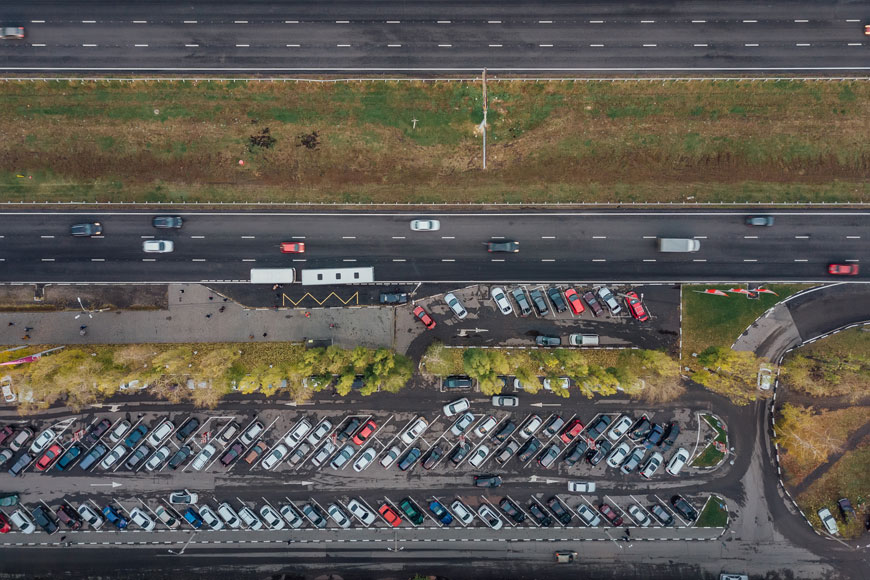
Circulation and traffic management
An efficient parking lot will be laid out to maximize the number of spots while encouraging easy traffic circulation and keeping pedestrians and drivers safe.
Maximizing the number of stalls depends on the shape and size of the lot. Angle parked stalls are positioned at 35, 45, or 60° from the direction of traffic in the aisles. Perpendicular stalls are at 90°. If aisles are only one way, greater angles require wider aisles. For example, a one-way aisle with 30° parking must be 12 feet wide. A one-way aisle with 90° parking must be 22 feet wide. If a lot is long and narrow, angle parking may make more sense. Two-way aisles need to be 24 feet across regardless of the angle of the parking.
The expected traffic pattern should be extremely well marked. Poorly marked one-way lanes will cause conflict as vehicles drive in the wrong direction or back-in to nose-in stalls. Intersections are often the site of quick decisions. Putting clear wayfinding and direction information on the same sign can help drivers make the right choices in a split second.
Parking areas contain unexpected traffic patterns, and pedestrians and vehicles sharing road space. Traffic management in these areas relies on slow vehicle speed. A driver entering or exiting a parking space needs time to make the maneuver. Driver visibility may be low as cars back into or out of spaces, and cars can appear suddenly from behind larger vehicles. If traffic is moving quickly, the risk of collision increases. Marked speed limits, stop signs at intersections, and traffic safety installations like bumps, humps, and parking stops can help keep a sedate pace in a lot.
Parking lots should also neither offer requirement nor incentive to back onto public roads. Careful stall placement will make turnabout easy within the lot.
Access for towing and fire services
In any parking lot, there will be towing. Cars might be broken down, abandoned, or unpaid; they might be left in tow away zones in front of access points or utilities. A typical tow truck is 21 feet long and 7-1/2 feet wide, and needs a curb to curb turning radius of 47 feet when it is pulling a car. A pumper fire truck is 47 feet long and 8 feet wide, and needs a turning radius of 40 feet. Service vehicles should have an access route to every part of the lot or garage.
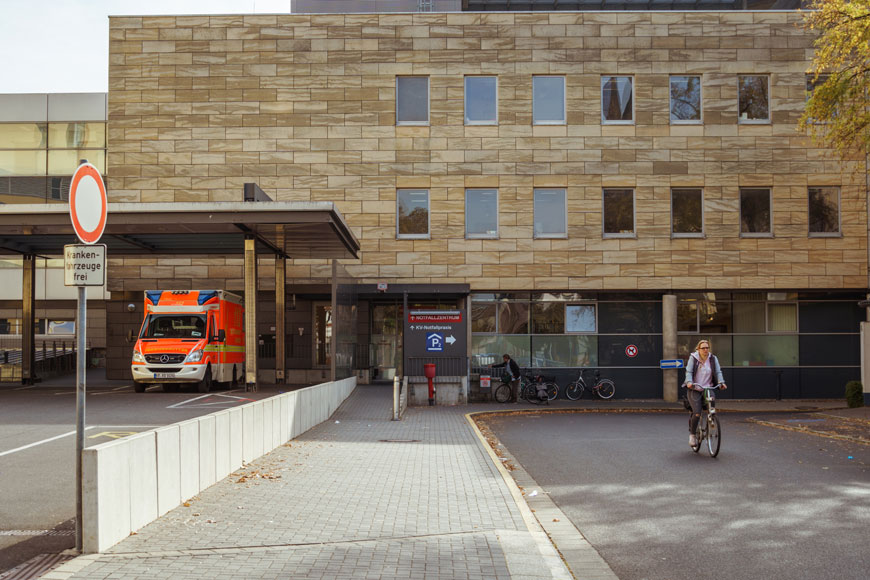
Estimating parking requirements
Municipalities usually legislate the number of required parking spaces for a new build. In hospitals, this rule is often given as ratio of parking-spaces-to-beds or parking-spaces-to-floor-space. Facilities must take the municipal code as a baseline, but they should also consider their individual needs. The activities and priorities of the hospital may require more spaces than mandated. Hospitals with research, teaching, and treatment centers might serve more people than a local general hospital. What size population will the hospital support? Will students, researchers, and travelling patients be likely to use the parking lot? Are the labs and other testing facilities planned for the hospital the only such services in the area? What are the local population’s emergency needs? Parking facilities should also be included in emergency response planning. Police, fire, and other emergency services need easy access to the hospital building.
In dense urban settings where space is at a premium, there may be a much lower number of spaces needed to bring a hospital to code. In these areas, cities may also legislate a maximum number of spaces. Although lack of parking can cause frustration, people in these neighborhoods have more transportation options, like taxi, transit, or bicycle. The hospital may also serve a smaller population, or be serving a younger demographic. For example, the City of Toronto specifies a maximum of 0.8 spaces per 1000 square feet in the densest urban center lots and along major streets. It specifies 3.5 spaces per 1000 square feet in most of the rest of the city.
Some jurisdictions legislate spaces using a combination of approaches. In Los Angeles, CA, the rule is a simple calculation of two parking spots per bed (Article 2, Section 12.21). Irvine, CA, a nearby suburb, uses a combinatorial approach. Irving legislates only an eighth as much parking per bed—one space per four beds. However, it additionally requires one space per 225 square feet of administration office floor area. The University of California at Irvine Medical Center is a top-rated teaching and research hospital that has more administrative space on its campus than general hospitals do. Irvine’s calculation seems reflective of its most notable facility.
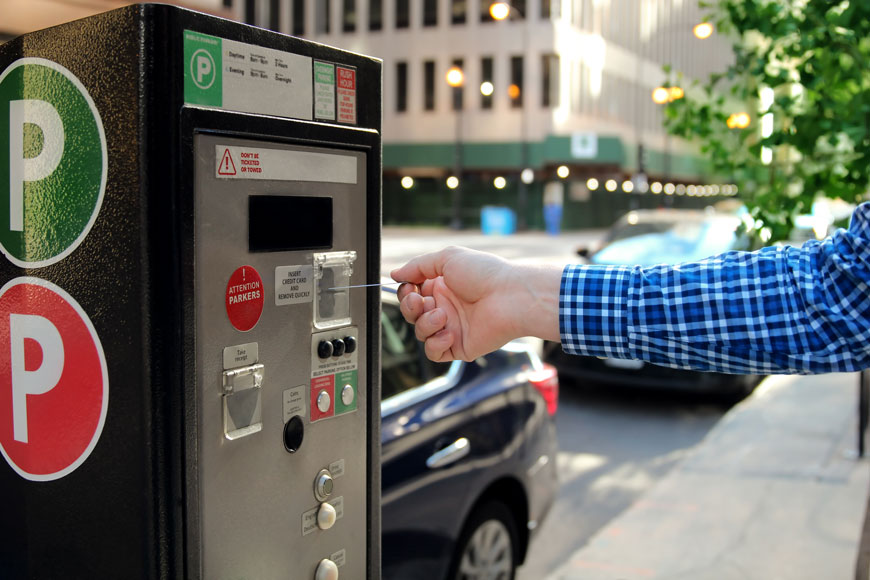
Hospital parking costs
Parking is not free. Parking lots and garages cost money to build, and money to maintain. Most health care facilities would prefer to spend on healthcare equipment. Yet demand for parking at hospitals continues to grow.
This trend is not surprising. In 1960, there were 0.4 vehicles per capita in use on American roads. By 2017, the number of vehicles per capita doubled and the population has almost doubled as well. There are 276 million vehicles registered in the US today creating traffic snarls and leading to lack of parking for patients. To pay for parking construction and maintenance, moderate the use of lots, and encourage visitors and staff to find other ways of getting to the site, hospital parking fees have been increasing.
Parking charges goad healthy users to find alternative ways to travel, but can be a serious health care cost for patients. Groups in the UK, US, and Canada have pushed back against hospital parking fees being a source of revenue for medical centers, with real concerns about the burden of fundraising falling to the most vulnerable. Some hospitals are seeking ways to aid these clients while still using pricing strategies to mitigate traffic. In North America, approaches have included: multi-day passes at a discount for anyone using the facilities, discounted rates available with a note from a doctor, means-tested passes for struggling families, or referrals to charities that provide parking-pass support.
Excellent hospital parking management includes balancing accessibility, maintenance, and cost. Done well, the parking lot can be a self-sustaining resource. Fees for some can encourage those in good health to find other ways of coming to work or to visit; profits can be used to defray the costs for those who are sick and struggling with longer-term need of the hospital. Good design provides a benefit that goes beyond the benefit of parking in other situations, helping make the hospital an accessible, busy space that cares for those who need it; invites visitors and family; allows for other public services to support patients; and welcomes those dedicated to the practice of medicine.




